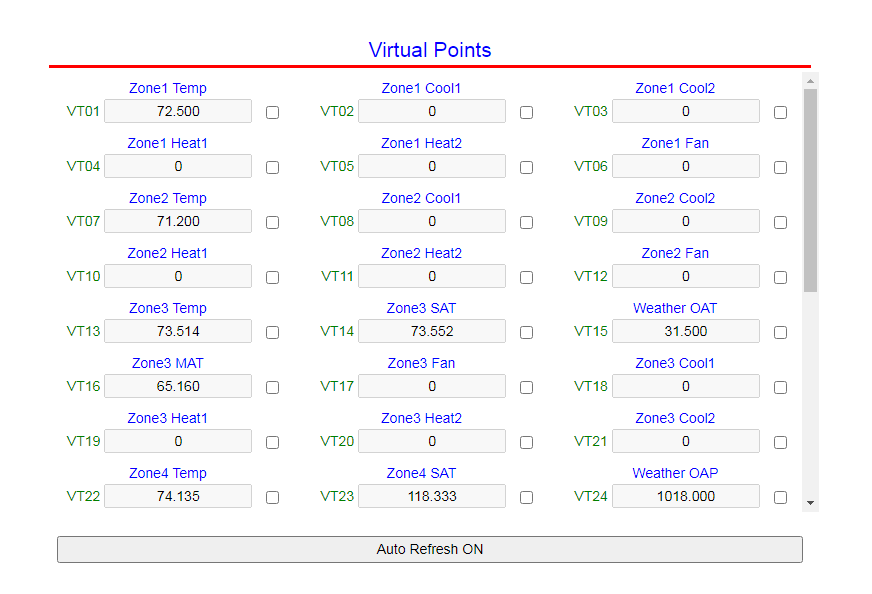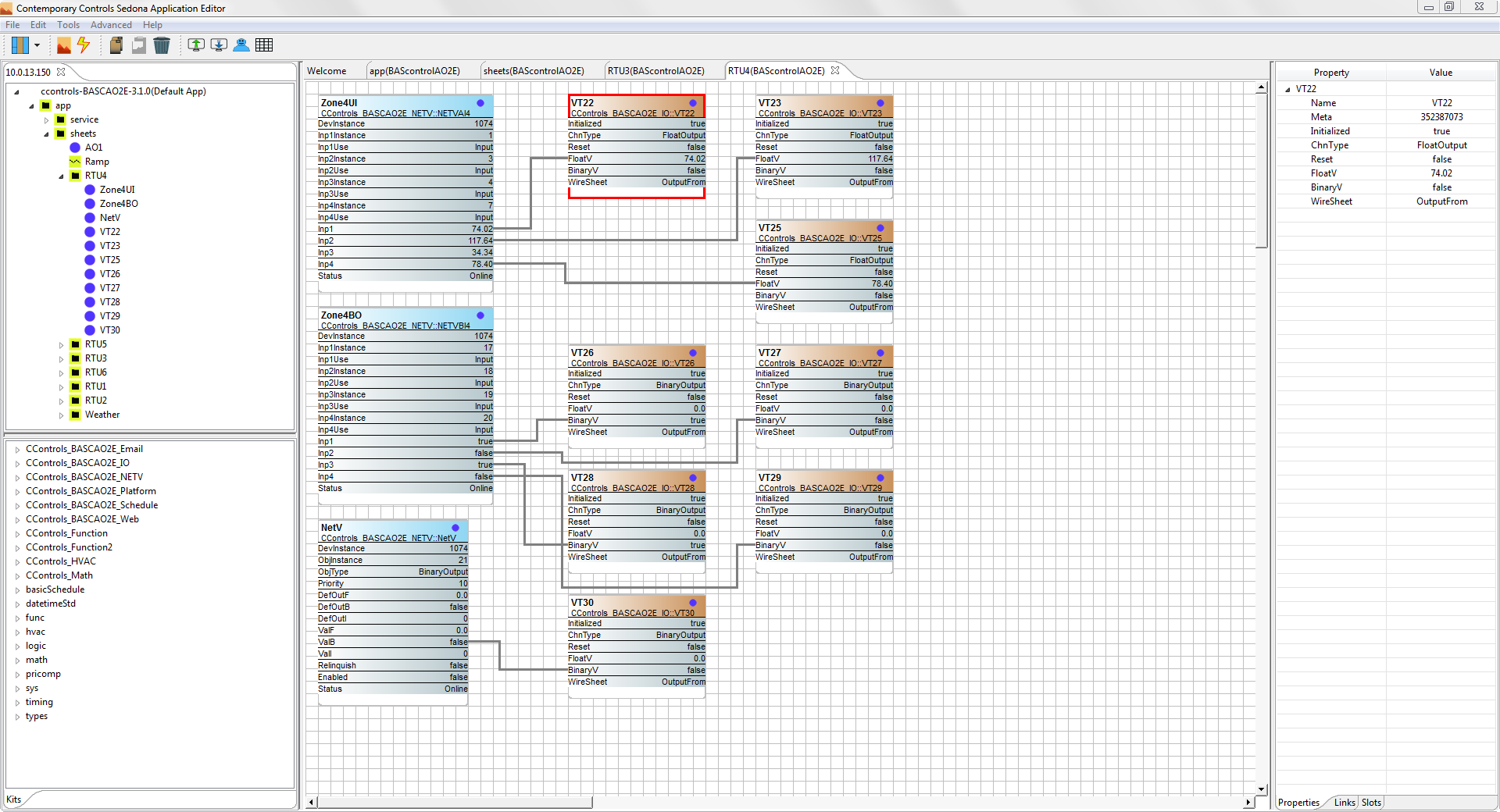Control Network Newsletter

BASpi-Edge Serves 48 BACnet Virtual Points
Virtual Points are used to share wire sheet data with a BACnet/IP client. A BACnet/IP client can "read" wire sheet data such as a calculated value or it can "write" to the wire sheet with a set-point or command. The BACnet description field and units of measure can be set as well as the BACnet name which must be unique.
With the BASpi-Edge, the most versatile Edge Controller in the market, Virtual Points have their own web page. Virtual Points can be configured to be analog (AV) or binary (BV) and allow communication to and from a BACnet client to the BASpi-Edge Sedona wire sheet. Virtual Points are usually setpoints, calculated data, occupancy commands, filter flags, or other status points that do not directly impact the physical input/output points that exist on the controller. A GREEN tag on the web page means that the virtual point has been placed on the wire sheet. Virtual Points support full BACnet Priority Array whether configured for Binary Value or Analog value.
There are 48 virtual point components (VT01–VT48) in the CControls_BASCPIE_IO and CControls_BASCAO2E_IO kits. Virtual Point components are used to link Sedona wire sheet readable/writeable data to a BACnet client. BACnet clients can discover, read and command these Virtual Points which can be linked as an input to the wire sheet or an output from the wire sheet (Read from wire sheet/Write to wire sheet).

Virtual Points could be used for setpoint, or reset data intended for the wire sheet or calculations, or status information generated by the wire sheet. When Virtual Points are set for outputs, they can be given a Default Value in their BAS Channel Configuration. Default Value is a value used by the output, immediately after bootup of the controller when Sedona logic or BACnet client have yet to command the output point. As soon as Sedona logic or a BACnet client write to the point, Default Value is no longer used by the output.

Although BACnet allows for the reading of the BASpi-Edge physical input and output points — and under certain conditions the writing of real output points — virtual points have no reading or writing restrictions. Virtual points are treated by BACnet as either a binary variable (BV) or analog variable (AV) while real points appear as binary inputs (BI), analog inputs (AI), binary outputs (BO) or analog outputs (AO). The BASpi-Edge logic engine reads the state of its inputs (AI and BI) and outputs (AO and BO), executes logic, and then sets outputs (AO and BO) accordingly. In a similar manner, a BACnet client can read the BASpi-Edge physical inputs and write to the BASpi-Edge physical outputs.
Virtual Points are multifunctional and can be used for Weather service data, utilized in Dashboards and pushed to the Cloud if desired. The ability to set Virtual Points is just one feature of the BASpi-Edge. It also features a 24 VAC/VDC power input, resilient pSLC 8 GB micro SD card, BACnet client/server communication over Ethernet or Wi-Fi, and Sedona function block programming. Data processing at the edge, web page configuration with quick and easy cloud connectivity to Azure IoT Central (SaaS) cloud solutions – all these features make BASpi-Edge a versatile controller suitable for a wide array of applications.
To learn more, visit the BASpi-Edge product page.